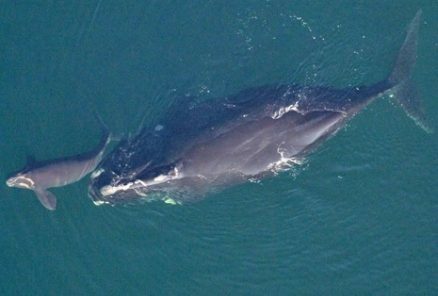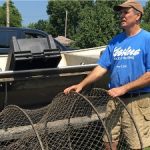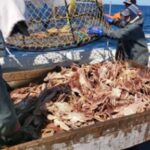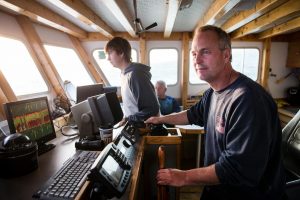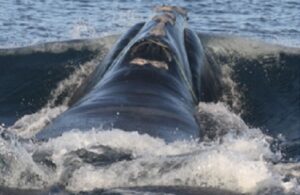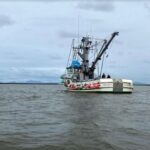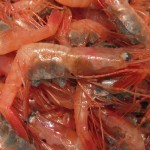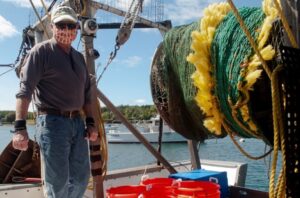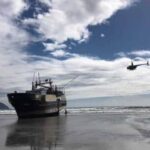Tag Archives: marine-science
Continuation of lobster quality and moult survey very important to southwestern NS industry
 Every fall since 2005, in advance of the commercial lobster fishery opening in Lobster Fishing Areas (LFA) 33 and 34, a scientific survey has been conducted in the waters around southwestern Nova Scotia. “The overall objective of the Atlantic Lobster Moult and Quality (ALMQ) Survey is to develop an ongoing monitoring program, based on biological indicators of moult-timing, quality and environmental conditions, to predict the quality of lobsters at the start of the lobster seasons in LFAs 33 and 34,” says Heather Mulock, executive director of the Coldwater Lobster Association. “The data collected is used to establish a framework for adaptation decision-making for the lobster sector, including ensuring better product marketability, live storage, and international shipping valuation.” more, >>CLICK TO READ<< 07:10
Every fall since 2005, in advance of the commercial lobster fishery opening in Lobster Fishing Areas (LFA) 33 and 34, a scientific survey has been conducted in the waters around southwestern Nova Scotia. “The overall objective of the Atlantic Lobster Moult and Quality (ALMQ) Survey is to develop an ongoing monitoring program, based on biological indicators of moult-timing, quality and environmental conditions, to predict the quality of lobsters at the start of the lobster seasons in LFAs 33 and 34,” says Heather Mulock, executive director of the Coldwater Lobster Association. “The data collected is used to establish a framework for adaptation decision-making for the lobster sector, including ensuring better product marketability, live storage, and international shipping valuation.” more, >>CLICK TO READ<< 07:10
The Snow Crab Collapse: A Tale of Unproven Assumptions and Overlooked Explanations
 The sudden decline in the snow crab population in the Bering Sea has triggered considerable concern among scientists, fisheries, and environmentalists alike. The collapse is alarming not only because of its immediate economic impact but also due to the broader implications for marine ecosystems. However, a critical examination of the prevailing explanations for this phenomenon reveals a troubling reliance on speculation rather than solid evidence. The central thesis of the NOAA Fisheries report—that warmer water temperatures increased snow crab metabolism, leading to their downfall—requires a more skeptical analysis. In this post, we’ll explore the weaknesses of this hypothesis, examine other plausible causes, and argue for a more comprehensive approach to understanding this ecological mystery. more, >>CLICK TO READ<< 08:27
The sudden decline in the snow crab population in the Bering Sea has triggered considerable concern among scientists, fisheries, and environmentalists alike. The collapse is alarming not only because of its immediate economic impact but also due to the broader implications for marine ecosystems. However, a critical examination of the prevailing explanations for this phenomenon reveals a troubling reliance on speculation rather than solid evidence. The central thesis of the NOAA Fisheries report—that warmer water temperatures increased snow crab metabolism, leading to their downfall—requires a more skeptical analysis. In this post, we’ll explore the weaknesses of this hypothesis, examine other plausible causes, and argue for a more comprehensive approach to understanding this ecological mystery. more, >>CLICK TO READ<< 08:27
Marine Science Vessel Celtic Voyager Sets Sail to Canada
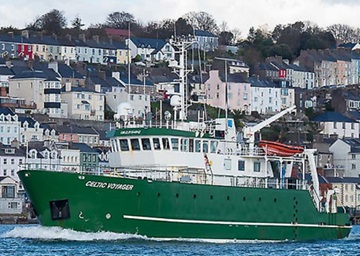 The Marine Institute’s Celtic Voyager, Ireland’s first multi-purpose research vessel, has been sold to Qikiqtaaluk Corporation of Nunavut, Canada. The vessel has played a significant role in advancing marine science and monitoring for the Irish government during its 25-year service life and has completed more than 600 surveys, enabled more than 6,500 science days, and sailed more than 550,000 miles while in service with the Marine Institute. The vessel will continue to be used for fisheries research and seabed mapping in Northern territories and Nunavut in Canada. Qikiqtaaluk Corporation is the Inuit birthright development corporation for the Qikiqtani Region and seeks to strengthen the social and economic well-being of Nunavut and the 15,000+ Inuit it represents. more, >>click to read<< 08:43
The Marine Institute’s Celtic Voyager, Ireland’s first multi-purpose research vessel, has been sold to Qikiqtaaluk Corporation of Nunavut, Canada. The vessel has played a significant role in advancing marine science and monitoring for the Irish government during its 25-year service life and has completed more than 600 surveys, enabled more than 6,500 science days, and sailed more than 550,000 miles while in service with the Marine Institute. The vessel will continue to be used for fisheries research and seabed mapping in Northern territories and Nunavut in Canada. Qikiqtaaluk Corporation is the Inuit birthright development corporation for the Qikiqtani Region and seeks to strengthen the social and economic well-being of Nunavut and the 15,000+ Inuit it represents. more, >>click to read<< 08:43
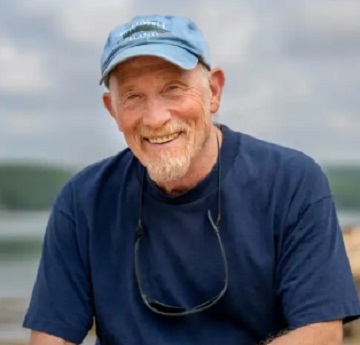
UMaine researcher who helped reshape marine science in Maine retires
When Bob Steneck came to the University of Maine in 1982, there were few marine ecologists in the state, and none interacted with fishermen. He was among the first in Maine to work with lobstermen on research, traveling with them on their boats, diving to the seafloor to study lobsters and sharing his findings with them. At that time, there was a scientific consensus that the lobster population in the Gulf of Maine was declining. By working with lobstermen and diving down to the depths of the gulf, Steneck showed that the population was actually on the rise. Steneck’s work and that of his students and colleagues helped propel an expansion of and change in how lobster fisheries research is conducted in Maine. Over the preceding decades, Steneck’s students continue collaborating with lobstermen and other fishermen on their studies. >>click to read<< 10:05
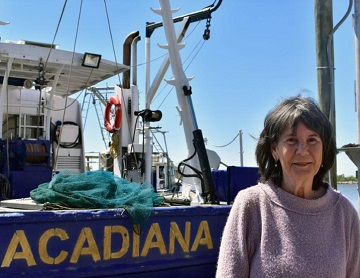
A lifetime of research links Gulf of Mexico ‘dead zone’ to Midwest fertilizer runoff
In the summer of 1985, Nancy Rabalais set sail on a research vessel into the Gulf of Mexico — and into the scientific unknown. Over nearly four decades, Rabalais has become a giant in her field. She has completed hundreds of interviews with journalists, presented a TED Talk, testified to Congress multiple times, mentored countless students at LSU and published nearly 160 studies. Now 73, Rabalais said she doesn’t plan to go on the research cruises anymore due to her age and health issues. She remains engaged in her work, even as she trains a new generation of scientists to take over. >click to read< 10:04

Retraction of flawed MPA study implicates larger problems in MPA science
A retraction is a Big Deal in science, especially from a prominent journal. What’s strange in this story is how the conflict of interest intersects with the science. The conflict of interest was apparent immediately upon publication, but it wasn’t until major problems in the underlying science were revealed that an investigation was launched, and the paper eventually retracted. But with increased press comes increased scrutiny. The critiques pointed out errors and impossible assumptions that strongly suggested the paper was inadequately peer reviewed. Proceedings of the National Academy of Sciences (PNAS) later determined that the person responsible for assigning Cabral et al.’s peer reviewers, Dr. Jane Lubchenco, had a conflict of interest. >click to read< 10:36

When memes fail anatomy: The scale of a blue whale’s butthole
When we saw the memes scoring the size of a blue whale’s anus second to some of the year’s most reviled politicians, our first thought was that it was deliciously funny. Naturally, our next thought was, “Is this true?” and “How big is a blue whale’s anus, anyway?” The first obstacle getting an answer to these pressing questions was persuading scientists to answer interview requests. One admitted that at first, he assumed his colleagues were messing with him. Once convinced our request was not a joke, the situation improved only slightly. >click to read< 11:11
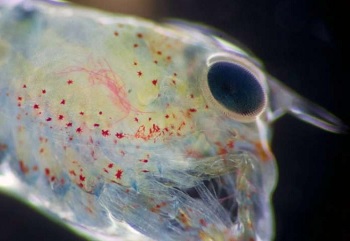
Study: Microplastic fiber pollution harms lobster larvae
A study published in the Marine Pollution Bulletin reports that the fibers affect the animals’ feeding and respiration, and they could even prevent some larvae from reaching adulthood. “Lobsters play a fundamental role in the Gulf of Maine ecosystem as well as the state’s economy, and it is important that we understand how pollutants impact their development.” Young lobsters grow to adulthood through four distinct developmental stages, and the researchers found that the physiology of each stage determined how the animals interacted with plastic fibers. The youngest lobsters didn’t consume them—but they were plagued by fibers accumulating under the shells that protect their gills. >click to read< 16:04
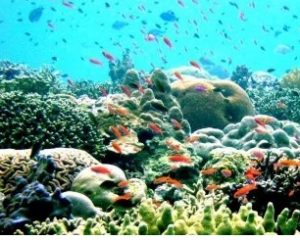
CO2 Not A Threat To Oceans
For the past three decades, the public has been taught by the news media and the folks who make a living composing mathematical equations they claim to simulate how our planet’s climate operates, that our oceans are in jeopardy.,,, Even if atmospheric CO2 concentrations triple from today’s four percent of one percent, which would take about 600 years, today’s surface pH of 8.2 would plateau at 7.8, still well above neutral 7. Now comes along biologist Jim Steele of the CO2 Coalition and former Research Director of San Francisco State’s Sierra Nevada’s Field Campus to drop a blockbuster of truly new knowledge. By Dr. Jay Lehr >click to read< 10:03
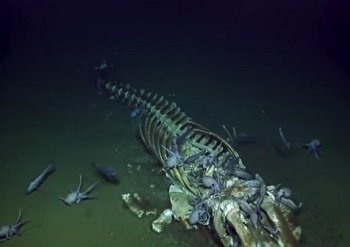
“Oh, here we go, baby!” Watch: Researchers stumble across a whale carcass teeming with marine scavengers
When whales die in the open ocean they sometimes sink to the sandy floor where scavenging fish and other marine creatures tuck into the colossal feast. Octopuses, deep-sea fish, crabs and bone-eating worms all turn up for dinner. But there’s one species in particular that gets über-excited when a whale carcass hits the ocean floor: marine researchers. A team from Monterey Bay National Marine Sanctuary aboard research vessel Nautilus were exploring the ocean depths off the coast of central California recently when they happened upon a baleen whale carcass. >click to read/watch< 15:12
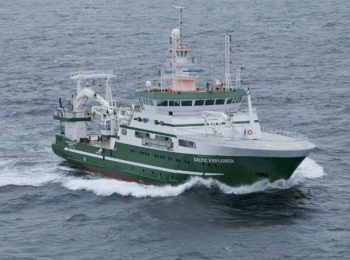
Annual Irish Groundfish Survey Commences End Of This Month
The annual Irish Groundfish Survey (IGFS 2019) will take place off the North, West and South Coasts for six weeks from 31 October. Carried out by the Marine Institute, the IGFS is a demersal trawl survey consisting of around 170 fishing hauls, each of of 30 minutes’ duration, in ICES areas VIa, VIIb, VIIg and VIIj. As part of the requirements for the 2019 survey, fishing will take place within a 2-nautical-mile radius of indicated positions. >click to read< 09:50
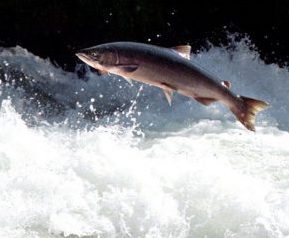
Researchers aim to find where Pacific salmon spend their winters
An international team of scientists is heading to the Gulf of Alaska for a ground-breaking research survey to uncover the secret lives of Pacific salmon in the winter. Discoveries coming out of a 25-day research cruise using a trawler in the North Pacific are expected to help countries do a better job of managing, conserving and restoring salmon stocks, including improving forecasting of returns. “I say it’s the great black box because we basically lose track of the salmon after they leave our coastal waters,” said Brian Riddell, president and chief executive of the Vancouver-based Pacific Salmon Foundation, a key backer of the endeavour. The team is made up of six Canadian scientists, eight from Russia, three from the U.S., and one each from Japan and South Korea.>click to read<13:41
Reflections on the success of traditional fisheries management – Hilborn and Ovando
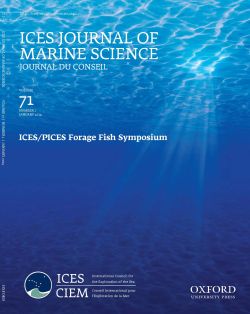 The argument persists that the continued overexploitation by many fisheries around the world is evidence that current approaches to fisheries management are failing, and that more precautionary management approaches are needed. We review the available estimates of the status of fish stocks from three sources: Read more here 11:31
The argument persists that the continued overexploitation by many fisheries around the world is evidence that current approaches to fisheries management are failing, and that more precautionary management approaches are needed. We review the available estimates of the status of fish stocks from three sources: Read more here 11:31
Bucking conventional wisdom, researchers find black sea bass tougher than expected – discard mortality rates
 The researchers had put the fish in the experimental group into one of four categories: those without visible injury; those with visible barotrauma; those with hook trauma (meaning the hook had caused significant internal injury); and “floaters” – those that couldn’t swim down into the water at all. To their surprise, the researchers found that approximately 90 percent of the fish,, Read more here phys.org 09:57
The researchers had put the fish in the experimental group into one of four categories: those without visible injury; those with visible barotrauma; those with hook trauma (meaning the hook had caused significant internal injury); and “floaters” – those that couldn’t swim down into the water at all. To their surprise, the researchers found that approximately 90 percent of the fish,, Read more here phys.org 09:57
10 times more fish in the sea? Context matters.
 Earlier this year, a research team from Spain released a surprising new estimate of mesopelagic fish biomass that is 10 times greater than previous estimates. This new study raises the total estimated biomass of mesopelagic fish from 1 billion tons to 10 billion tons, accounting for 95% of all fish biomass. Read more here southernfriedscience 18:35
Earlier this year, a research team from Spain released a surprising new estimate of mesopelagic fish biomass that is 10 times greater than previous estimates. This new study raises the total estimated biomass of mesopelagic fish from 1 billion tons to 10 billion tons, accounting for 95% of all fish biomass. Read more here southernfriedscience 18:35
Citizen science study to map the oceans’ plankton
 “The reason the project came about was because, in 2010, some Canadian scientists wrote a paper that suggested that the phytoplankton in the world’s oceans had declined by 40% since the 1950’s,” explained project leader Richard Kirby, a research fellow at Plymouth University’s Marine Institute. Read more here bbc.com 15:46
“The reason the project came about was because, in 2010, some Canadian scientists wrote a paper that suggested that the phytoplankton in the world’s oceans had declined by 40% since the 1950’s,” explained project leader Richard Kirby, a research fellow at Plymouth University’s Marine Institute. Read more here bbc.com 15:46
Over demanding market affects fisheries more than climate change
 Summary: Fisheries that rely on short life species, such as shrimp or sardine, have been more affected by climate change, because this phenomenon affects chlorophyll production, which is vital for phytoplankton, the main food for both species. Read more here sciencedaily 16:37
Summary: Fisheries that rely on short life species, such as shrimp or sardine, have been more affected by climate change, because this phenomenon affects chlorophyll production, which is vital for phytoplankton, the main food for both species. Read more here sciencedaily 16:37
Nine steps to save waterways and fisheries identified by researchers
The key to clean water and sustainable fisheries is to follow nine guiding principles of water management, says a team of Canadian biologists. Read [email protected] 10:40
Cod’s mysterious defence strategies
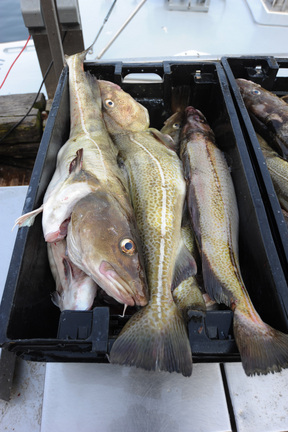 Low prices for wild-caught cod have kept cod farming profits minimal up to now. The additional challenges of expensive feeds, destructive diseases and high mortality have also proven difficult to solve. On the disease front, Norwegian researchers showed in 2011 that the cod immune system is very unlike that of other production fish such as salmon. Read [email protected] 10:06
Low prices for wild-caught cod have kept cod farming profits minimal up to now. The additional challenges of expensive feeds, destructive diseases and high mortality have also proven difficult to solve. On the disease front, Norwegian researchers showed in 2011 that the cod immune system is very unlike that of other production fish such as salmon. Read [email protected] 10:06
Computer Model Predictions: Major Reductions in Seafloor Marine Life from Climate Change by 2100
 An international team of scientists predict seafloor dwelling marine life will decline by up to 38 per cent in the North Atlantic and over five per cent globally over the next century. These changes will be driven by a reduction in the plants and animals that live at the surface of the oceans that feed deep-sea communities. As a result, ecosystem services such as fishing will be threatened. Read more@sciencedaily 11:13
An international team of scientists predict seafloor dwelling marine life will decline by up to 38 per cent in the North Atlantic and over five per cent globally over the next century. These changes will be driven by a reduction in the plants and animals that live at the surface of the oceans that feed deep-sea communities. As a result, ecosystem services such as fishing will be threatened. Read more@sciencedaily 11:13
Now We’re Talkin’! – Assessing the potential of calcium-based artificial ocean alkalinization to mitigate rising atmospheric CO2 and ocean acidification
 Enhancement of ocean alkalinity using Calcium-compounds, e.g. lime has been proposed to mitigate further increase of atmospheric CO2 and ocean acidification due to anthropogenic CO2 emissions. [email protected] 10:13
Enhancement of ocean alkalinity using Calcium-compounds, e.g. lime has been proposed to mitigate further increase of atmospheric CO2 and ocean acidification due to anthropogenic CO2 emissions. [email protected] 10:13
As Long Island Sound’s temperature increases, Fish populations heat up in Long Island Sound
 The 42-foot-wide net was set in the rolling waters of Long Island Sound, about 150 feet behind the research vessel John Dempsey. “All right, we’re fishing,” announced Jacqueline Benway, a state fisheries biologist with Connecticut, as she shut off the hydraulics controlling the large funnel-shaped net. [email protected] 10:13
The 42-foot-wide net was set in the rolling waters of Long Island Sound, about 150 feet behind the research vessel John Dempsey. “All right, we’re fishing,” announced Jacqueline Benway, a state fisheries biologist with Connecticut, as she shut off the hydraulics controlling the large funnel-shaped net. [email protected] 10:13
Can the ‘butterfly effect’ inform fisheries management?
 Dr. Les Kaufman, a marine ecologist at Boston University, has been deploying his considerable talents in the service of fisheries science and management for over three decades, but it is in the last year that he has developed an approach that very well may elevate our ability to manage fisheries onto a new level. more@workingwaterfront 17:31
Dr. Les Kaufman, a marine ecologist at Boston University, has been deploying his considerable talents in the service of fisheries science and management for over three decades, but it is in the last year that he has developed an approach that very well may elevate our ability to manage fisheries onto a new level. more@workingwaterfront 17:31
Scientist look for new marine species for commercial use
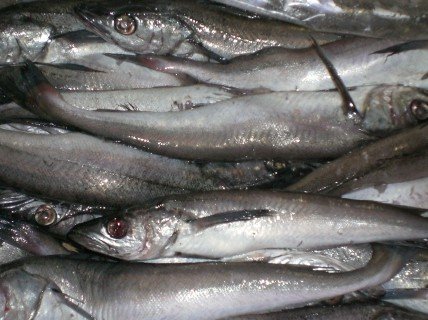 In northwest Mexico, the biggest part of the fishery production is based in few species such as sardine, squid, tuna and shrimp. However, the Center of Biological Research of the Northwest (CIBNOR) has identified new marine species capable of increasing the volume of this production. [email protected] 15:14
In northwest Mexico, the biggest part of the fishery production is based in few species such as sardine, squid, tuna and shrimp. However, the Center of Biological Research of the Northwest (CIBNOR) has identified new marine species capable of increasing the volume of this production. [email protected] 15:14
Study links warmer water temperatures to greater levels of mercury in fish
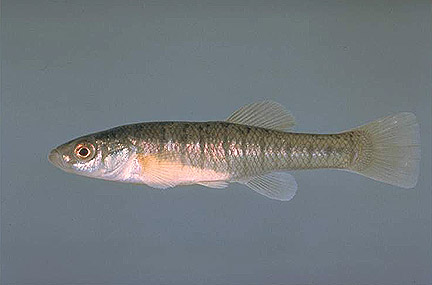 Killifish are not usually big eaters. But in warmer waters, at temperatures projected for the future by climate scientists, their metabolism — and their appetites — go up, which is not a good thing if there are toxins in their food. more@wapo Research Article: Experimental and Natural Warming Elevates Mercury Concentrations in Estuarine Fish @plosone.org 10:13
Killifish are not usually big eaters. But in warmer waters, at temperatures projected for the future by climate scientists, their metabolism — and their appetites — go up, which is not a good thing if there are toxins in their food. more@wapo Research Article: Experimental and Natural Warming Elevates Mercury Concentrations in Estuarine Fish @plosone.org 10:13
Glider Palooza 2013 – Diving ocean gliders capture valuable data
 “That boat is right where we want to be,” Rock said, glancing down at his GPS screen and pointing to where a big fish dragger, with long mantislike stabilizer arms spread wide, towed a net right through the area where the torpedo-shaped glider should be waiting for them. more@capecodonline 10:49
“That boat is right where we want to be,” Rock said, glancing down at his GPS screen and pointing to where a big fish dragger, with long mantislike stabilizer arms spread wide, towed a net right through the area where the torpedo-shaped glider should be waiting for them. more@capecodonline 10:49
Climate Change Will Upset Vital Ocean Chemical Cycles, Research Shows
New research from the University of East Anglia shows that rising ocean temperatures will upset natural cycles of carbon dioxide, nitrogen and phosphorus. Plankton plays an important role in the ocean’s carbon cycle by removing half of all CO2 from the atmosphere during photosynthesis and storing it deep under the sea — isolated from the atmosphere for centuries. more@sciencedaily 09:34
Not Your Average Drifters – Plankton, Part I – by Casey Diederich
 “Plankton” is a term that comes from the Greek meaning “wanderer” and was coined to describe any organism that doesn’t have the ability to swim against the water current. So, technically, even some very large animals like jellies are members of the plankton, but most planktonic organisms are very small, and as the title suggests, the best things come in small packages. more@neoo 16:26
“Plankton” is a term that comes from the Greek meaning “wanderer” and was coined to describe any organism that doesn’t have the ability to swim against the water current. So, technically, even some very large animals like jellies are members of the plankton, but most planktonic organisms are very small, and as the title suggests, the best things come in small packages. more@neoo 16:26
New Ocean Forecast Could Help Predict Fish Habitat Six Months in Advance

Being able to predict future phytoplankton blooms, ocean temperatures and low-oxygen events could help fisheries managers,” said Samantha Siedlecki, a research scientist at the UW-based Joint Institute for the Study of the Atmosphere and Ocean. more@sciencedaily 10:37






 Many scientists are increasingly acknowledging that we can no longer afford to dismiss some gee-whiz technological fixes outright. We need to understand what, if any of it, could help. In 2012, a controversial California entrepreneur motored off the coast of British Columbia and dumped 100 metric tons of iron dust into the Pacific Ocean, hoping to spark a 4,000-square-mile plankton bloom.
Many scientists are increasingly acknowledging that we can no longer afford to dismiss some gee-whiz technological fixes outright. We need to understand what, if any of it, could help. In 2012, a controversial California entrepreneur motored off the coast of British Columbia and dumped 100 metric tons of iron dust into the Pacific Ocean, hoping to spark a 4,000-square-mile plankton bloom. 



























